Leaf anatomy
Although botanists will be furious, for simplicity, kratom leafs can roughly be divided into three tissues, leaf tissue, veins and the petiole. The petiole is the stem attaching the leaf to a branch. The veins are the vascular tissue of the leaf. They form a web of small connected ducts and transport water, nutrients and many other compounds from and into the leaf. In between these veins is the leaf tissue itself, which is made up of cells containing large amounts of chlorophyll. In the leaf tissue most of the plants photosynthesis takes place, producing sugar to support growth of the whole tree.

Figure 1. Illustration adapted from Shellard and Lees, 1965. The kratom leaf is attached to the stem with the “leaf stem” or petiole. It continuous into the midvein (or rib). The secondary veins are the vascular tissues radiating from the midvein.
In whole kratom leafs (Fig 1A) most of the desirable alkaloids are found in the leaf tissue between the veins. Kratom users in Thailand often remove the petiole and bigger centre vein before chewing the leaf. For production of dried leaf powder the whole leaf is harvested and dried. Petioles and centre veins are removed manually and then the dried remainder is grinded and sieved. Because the veins are harder they do not grind well and are sieved out. What remains is mainly soft leaf tissue with some smaller vein fragments.
Vendors usually discarded the removed petiole, midvein and sieved out lateral veins. This material is wrongly termed stem and veins (S&V). As Figure 1 illustrates, what is commonly referred to as stem is actually the petiole. (But because S&V has become such a common term in the kratom community I will continue to use it throughout this article.)
When total alkaloids content is measured these “leftover” materials have less alkaloid compared to the leaf tissue. Therefore largely removing these tissues results in more alkaloids per gram of powder and became common practice for some producers. But not only quantity matters. Here we will discuss some other interesting qualities of these stem and veins.
Stem and Vein specific alkaloids
So far more than 45 alkaloids have been isolated from Mitragyna speciosa and there is much variation between trees from different locations and some seasonal influence (Shellard et al., 1978).
The biogenesis of all these alkaloids is unknown and it is possible that precursor alkaloids are synthesised in the root and travel upwards through the vasculature. There could be tissue specific modifications of such precursors resulting in different alkaloid patterns in different tissues (Shellard et al., 1978). In other Mitragyna species such as M. Parvifolia it was shown that stem and bark tissue clearly contain different alkaloids from leaf tissues (Shellard and Lala, 1977). It is not clear which alkaloids are predominantly present in S&V of Mitragyna speciosa material and how exactly these alkaloid fractions differ from sieved leaf.
Although total alkaloid levels are lower than in leaf there is supposedly relatively more mitragynine present in S&V. Also levels of some interesting Uncaria alkaloids are thought to be higher. The most predominant one is probably Mitraphylline. Rhynchophylline and Corynantheidine are also frequently mentioned.
These alkaloids are speculated to act as NMDA, α2-adrenergic and µ-opioid receptor antagonists. No conclusive research on the presence and activities of such compounds in S&V has been performed.
Personal Experience: Using Stem and Vein
On request a supplier provided me with S&V from the four different strains. First I experimented with these single powders. Indeed I found the S&V to be slightly less potent, about 25% more material was required to gain the same intensity as.
The experience itself however was clearly different. In general, when compared to leaf, the effect for me (and mind you its subjective) is more sedating and analgesic. Although the typical contrasting effect of simultaneous sedation and stimulation is still clearly present. What is remarkable is it took considerately longer before effects were noticed and these effects lasted much longer compared to leaf. Once the primary effect disappear after about 4 hours (leaf lasts only 3 hours for me) a warm fuzzy relaxed feeling became noticeable, including hot flushes and sensations of warmth in my face and along my spine.
Possibly the coarseness of the S&V could slow down the uptake. I decided to grind some of the material into a fine dust. Upon grinding a brown golden powder resulted. It visually reminding me of some very sedating powders on the market. When this powder was tested the come up was more acute and intensity was improved.
S&V of different strains
I started exploring the various strains. Because grinding is a pain and I enjoyed the slow come up of the coarse material I decided not to use grinded material.
Sumatra-S&V
First one I tried was the Red Vein Sumatra Stem and Veins. It was very intense and in a way even aggressive, almost dirty feeling but I thoroughly enjoyed it. Since I burn mainly for stress relief the intense relaxation was perfect.
The S&V from the WVS were more or less comparable to the red. Somehow it was a bit more energetic and even nervous at times but I would have a hard time telling them apart.
Malay-S&V
I had high expectations since the Malay makes such a potent leaf. I was surprised to find that the S&Vs from this strain were very mellow, smooth and pleasantly relaxing. Compared to the Sumatra’s the Malay was more stretched out and smouldering. Because of its long lasting and smooth analgesic effect the Malay S&V could be an excellent choice for people with chronic pain. Surprisingly in some combinations it can act as a intensifier.
Borneo-S&V
I didn’t explore the S&V from the Red Borneo as much as the other strains. The main reason for this is that the Borneo leaf already has many of the characteristics that I consider typical for S&V although in some weird way the Borneo leaf seems more subtle. The times I did try the Borneo S&V it was more comparable to the Malay then to the Sumatra’s. A smooth and long lasting experience.
Mixing!
Stem and vein powders really shine when they are mixed with leaf powders. The result is a more complete, longer lasting effect, with a fuzzy (sometimes a bit “dirty”) warm, sedating / relaxing feel. It equals out over-stimulating strains (which I do not enjoy) and I can tell you that certain combinations reminded me of a potent “strain” often marketed as “Sundanese”. I also know that some of the most sedating strains out there contain added S&V. These are the exceptions to the rule that darker powders are more sedating. A high percentage finely grinded S&V results in a very light brownish tan powder.
Recipes.
The kratom connoisseurs cookbook. I love experimenting with and blending different strains and powders. When I combine leaf and S&V I like to use about half of each. When more length or smoothness is desired I suggest using the Green Malay. Borneo leaf are added for extra sedation and to modulate and lengthen the mixes although sometime, in lower amounts it can create opposite effects. These are a few of my most successful mixes and may assist others in their own experimentation:
“Standard mellow” (basic mix, solid results)
- 50% Stem and Vein
- 50% Borneo Red Vein
“Intense” ( steep edge)
- 40% Stem and Vein
- 40% Borneo Red Vein
- 20% Green Malay
“Balanced” (more stamina)
- 40% Stem and Vein
- 40% Borneo Red Vein
- 20% Borneo Green Vein
“Chill out” (long lasting):
- 50% Stem and Vein
- 20% Borneo Red Vein
- 30% Red Thai
“Aggressive” (more energetic in a ‘dirty’ way)
- 25% Stem and Vein
- 25% Borneo Red Vein
- 50% Borneo White Vein
Tolerance buster?
In kratom communities on the internet it is often reported that S&V can reduce tolerance to kratom. In my experience this has not been the case. I rarely consume S&V for days in a row and usually mix in leaf material. I don’t know if this effects the efficiency of tolerance reduction but I have at times experienced some tolerance and it seems this has not been altered due to the S&V. One thing which does seem to works wonders against tolerance is a break. 48-72 kratom free hours usually reset sensitivity enough to keep things really fresh and enjoyable.
Considerations
There are some things to consider:
Some people prefer uplifting clean aroma’s, if so S&V is not for you.
If you are not one of those “MaengDa” people and (also) enjoy; relaxing, calming, pain and anxiety reducing long lasting, dreamy mellowness, then, by all means, give it a try! Some people report great results with S&V while others experience only minor effects. When trying new material always titrate the amounts, start low and work your way up from there.
Note that the mixes I gave are combinations which I personally enjoy a lot. Everybody is different and I cannot guaranty that it will be the same for everybody and the idea is to give you some ideas to start experimenting yourself!
Some people report a higher incidence of adverse reactions such as hot flushes, headache, and nausea compared to sieved leaf. Although I never encountered any of these problems. Little is known about the long term health effects of kratom usage although it seems relatively harmless when used responsibly. It is unlikely that S&V is substantially different from leaf in this regard but moderation is advised.
References
Shellard EJ, Houghton PJ, Resha M (1978) Mitragyna Species of Asia .31. Alkaloids of Mitragyna Speciosa Korth from Thailand. Planta Medica 34: 26-36
Shellard EJ, Lala PK (1977) THE MITRAGYNA SPECIES OF ASIA. Planta Med 31: 395,399
Shellard EJ, Lees MD (1965) THE MITRAGYNA SPECIES OF ASIA – Part V – The anatomy of the leaves of Mitragyna speciosa Korth. Planta Med 13: 280,290



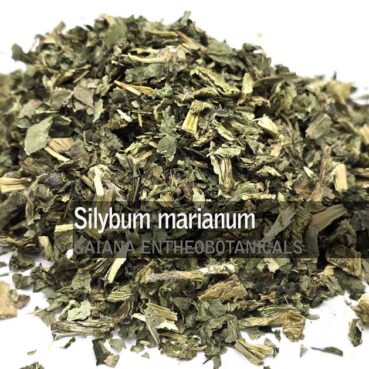
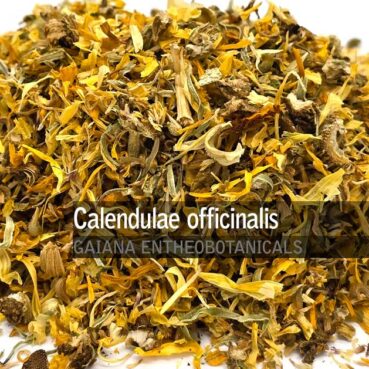
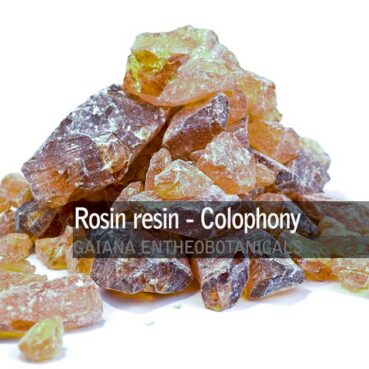

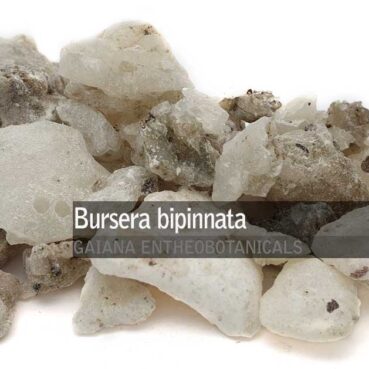
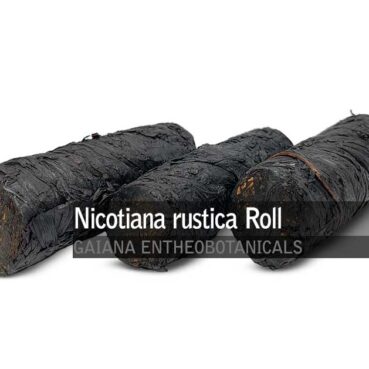

Ordered back in June and things came in very quickly. North America in 1.5 week. Good service to customer
JerryMooked
the best strain for productivity in my opinion
Brian
Great quality,great service! I was wondering if you will have B. Caapi leaf in the future also? That would be…
Rembrandt
Good pack, good quality. I would recommend it. Very fast shipping! Thank you gaiana! :) Im also excited to try…
miran
Potency 4/5 Taste 5/5 Petty good Red Strain. Currently the most potent Strain aviable at the Moment.
Vincent